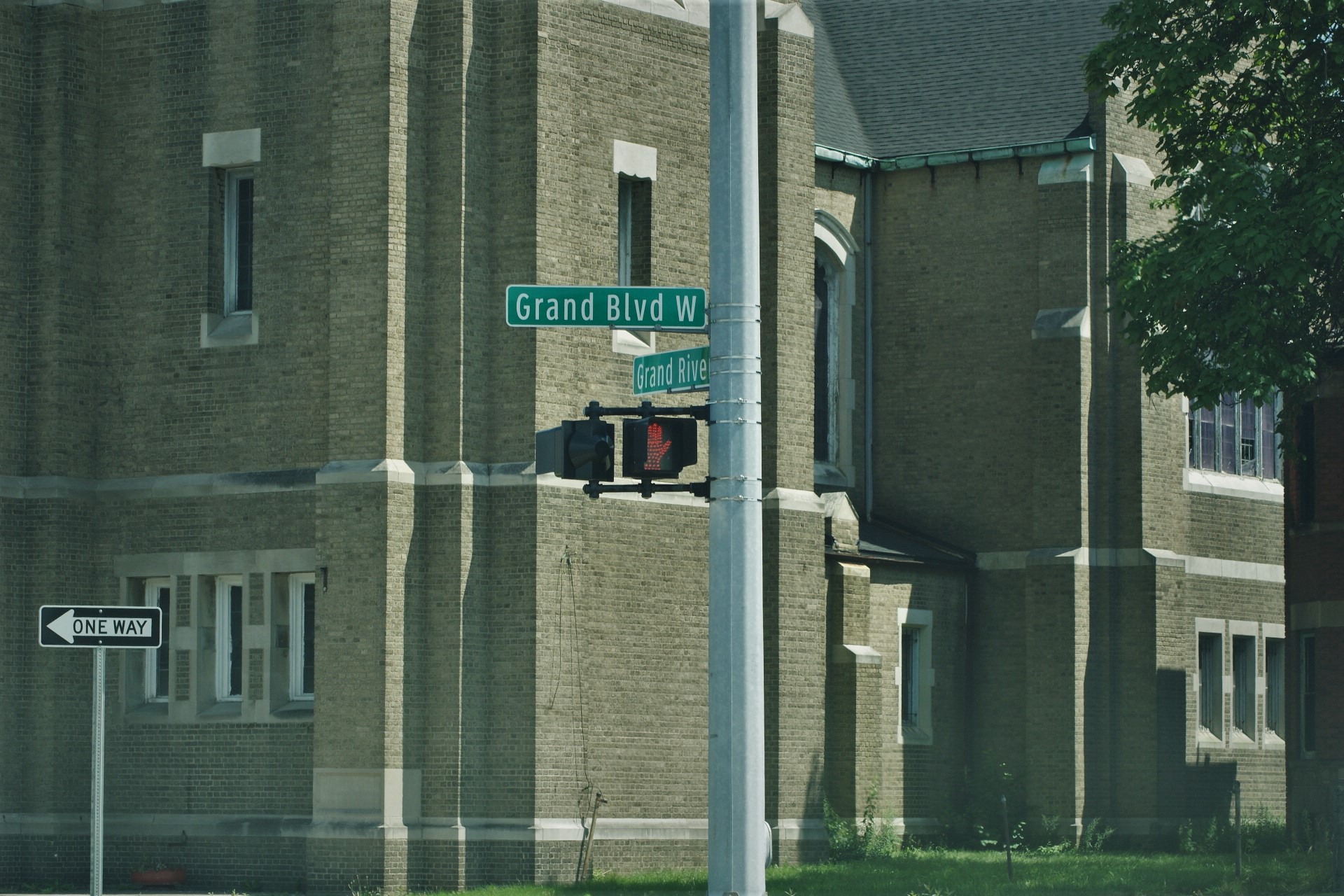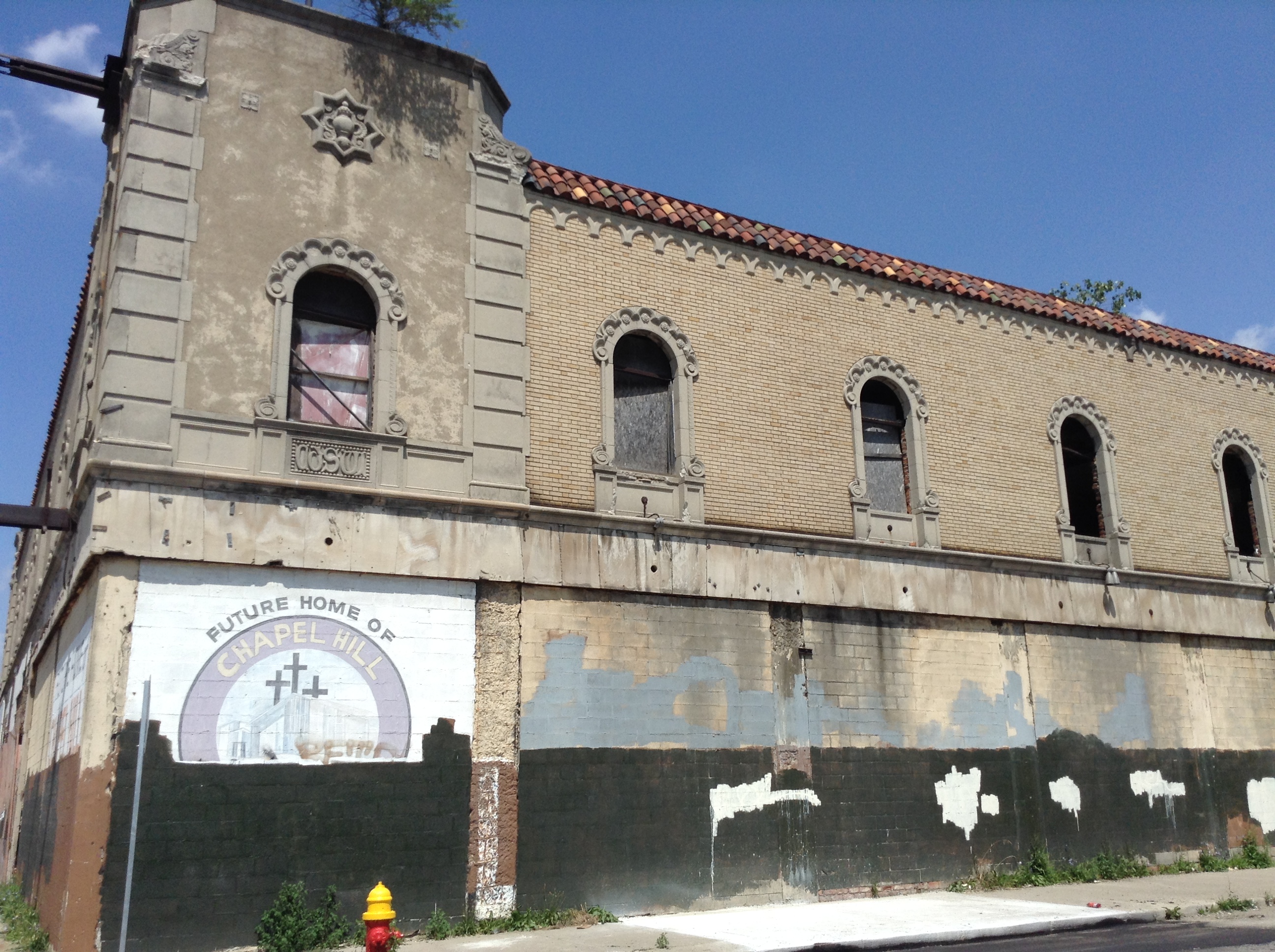Detroit’s Grande Ballroom Survives Civil Unrest of July 1967
Music may have kept neighborhood residents from harming the building.

[Editor’s note: A group called Friends of the Grande is leading an effort to restore the Grande Ballroom. In June 2017, the building’s owner, Chapel Hill Missionary Baptist Church, gave the group permission to nominate the Grande to the National Register of Historic Places.]
Noah Ovshinsky wrote and produced this story. It originally aired in 2007.
During the civil unrest of July 1967, hundreds of businesses were looted and burned in Detroit. Despite being located in a predominantly black neighborhood, one famous white-owned building remained untouched: the Grande Ballroom. On the morning of July 23, owner and concert promoter Russ Gibb was on the roof of the ballroom. It was about 2:30 a.m. And it was very hot.
“We were up there just doing whatever you did after a rock show,” Gibb says. “A lot of kids that worked at the Grade, the hangers-on, they were on the roof. Hot time, hot city. Hot night in the hot city.”
The Grande occupied the second floor of a two-floor building at the corner of Grand River and Beverly. It had a small stage and a small wooden dance floor. Not long after its opening, it became the gathering place for Detroit’s burgeoning counter-culture, playing host to some of the biggest names in folk, rock ’n’ roll, blues, and jazz. Gibb says a famous singer/songwriter was on stage when the riot began.
“It was after Tim Buckley, who was a good friend of mine, and his drummer, Carter Collins, who was black,” Gibb recalls. “They had been staying with me here in Dearborn at my house, because y’know, in those days, not all rock ’n’ roll stars moved around in jet planes. They were just sort of ordinary folk.”

It was a hot few days in Detroit, which meant it was hot inside the Grande. There was no air conditioning, just a large fan. To escape the heat, Tim, Carter, Russ, and others escaped to the roof. Later, they heard sirens on the roof, but ignored them. It was summer in Detroit, after all.
“We decided it was so hot that we would all drive out in a convoy to Kensington — go out Grand River and go out to Kensington Park,” Gibb says. “And so we were out in Kensington park, sleeping, smoking, drinking, carrying on.”
But then as night turned into morning, and morning turned into afternoon, the group decided to head back to the Grande. Singer Tim Buckley and his drummer Carter Collins had to be back on stage at 6 p.m. They drove down Grand River, unaware of what was happening.
“Now, in those days we didn’t listen to radio — I’m sorry, but we didn’t,” Gibb says. “We all had cassette players — 8-track, and that was very hot in our cars, and of course we were listening to ‘the jams,’ as we called them. For those uninitiated, that means ‘music.’”
The three slowly make their way back to the Grande, until they come upon a police barricade.
“We could see smoke coming out and we said, ‘Oh there must be a big fire,'” Gibb says. “We turned on the radio: ‘riot.’ That’s what we heard: ‘riot.’ But our first thought is, ‘Oh my god, that’s down where the Grande is!’ And Tim says, ‘Oh, my guitar is there,’ and Carter says, “My drums are there!’ And I’m thinking, ‘Oh, all the stuff I have there! My amps and everything.’”
So the trio went back to Dearborn and to hatch a plan to get their stuff, despite the warnings on the radio.
“‘Don’t leave your homes. All citizens stay home!’ It’s like Big Brother yelling at us,” Gibb says. “We said, ‘to hell with Big Brother — we’ve got a guitar, we’ve got a set of drums, and I have my amps!’ All my amps that I’ve paid for — I’ve gotta go save them!”
The three secure a trailer and get back in the car, when they realize a potential flaw in their plan.
“We started out, and we said, ‘Oh my god, Carter is in here, and he’s a black guy,'” Gibb says. “‘Carter! Get in the back seat and duck down!’ So he ducks down in the back seat, and we drive down to about Joy Road and Wyoming where Detroit turns into. We said, ‘Uh-oh, two white guys [going into Detroit]!’ So we jumped in the back, and Carter drove into town.”
Finally, they make it to the Grande. The neighborhood is filled with smoke and damaged buildings. Gunshots are heard in the background. A neighboring appliance store is being stripped of its merchandise — what Gibb calls ‘Detroit shopping.’ But so far, the Grande remains untouched.
“There were smiling faces and craziness going on,” Gibb says. “And of course, two white guys looking at all of this, and all those black faces. We were scared you-know-what — we couldn’t even urinate, we’re so frightened. And we get into the Grande to get all of our stuff out. That was the main aim.”
Piece by piece, the three remove their belongings from the Grande, fully aware of the chaos that surrounds them. Eventually, they get their trailer loaded.
“Carter, who is a big man and a hell of a drummer, as we’re coming out of the door, two black youngsters come running madly down the street,” Gibb says. “And Carter puts his hands out — he stretches out like he’s going to capture them, and he does, and they sort of swing back into him, and he says, ‘Hey, boys, what’s going on? How come you’re not burning the Grande down?’ And one of the kids looked at him and says, ‘They’ve got music there, man!’ and Carter smiles and let them go. But that said it all. That said it all.”
Why, when so many other businesses burned, did the Grande survive? Gibbs said the kids they ran into that evening summed up the reason perfectly: because of the music. The Grande hosted many musicians — white and black — and they played to an audience, Gibb says, that didn’t care about skin color. They only cared about the music. Gibb says music has the power to bring people together, even today.
“We were downtown at Seldom Blues for dinner not too long ago, and there was a country and western thing going on down there, and it was packed with all kind of people,” Gibb says. “And that was a good sign.”
Gibb says music saved the Grande. And, he says, it will save Detroit.
“It’s the soul of our town,” Gibb says.” Notice I said ‘our town,’ not Dearborn, not Grosse Pointe — ‘our town,’ because ‘our town’ is bigger. It’s called Detroit, and it’s all of us.”
The Grande closed briefly after the riot, but it did reopen. Led Zeppelin, Chuck Berry, Taj Mahal, Fleetwood Mac — all of them would later play at the Grade. Tim Buckley would continue to play music until his death in 1975 at the age of 28. Carter Collins went on to record for the ‘70s soul band Tower of Power, Laura Nyro, and Leonard Cohen, among others. Russ Gibb would go on to spend more than 20 years teaching at Dearborn High School.
Today, the Grande stands abandoned, dilapidated, having closed in the early ‘70s. But what remains is a powerful lesson: Despite the riot of 1967, people came back to the Grande — white and black. They came back for the music, what Gibb calls “the jams.” And now that people are trying to reimagine what Detroit could be, the jams remind us of what’s possible.
